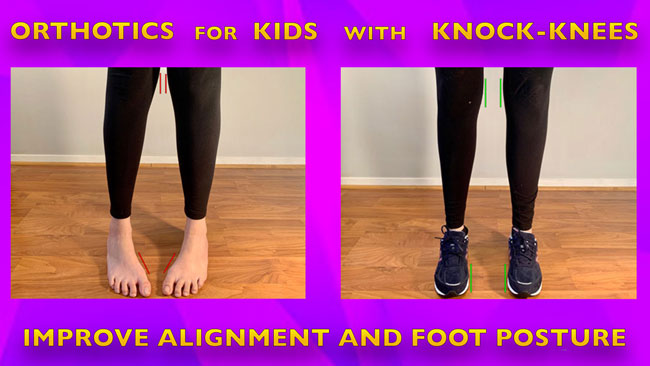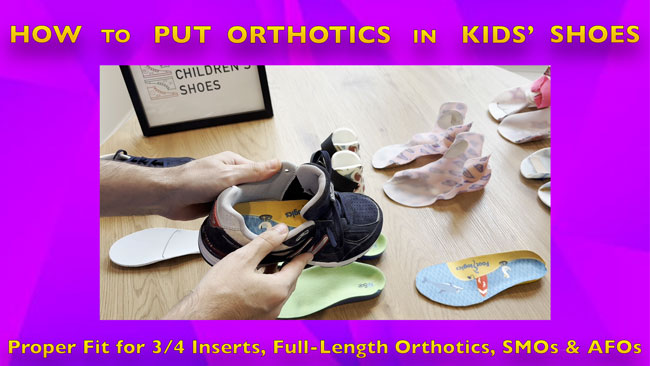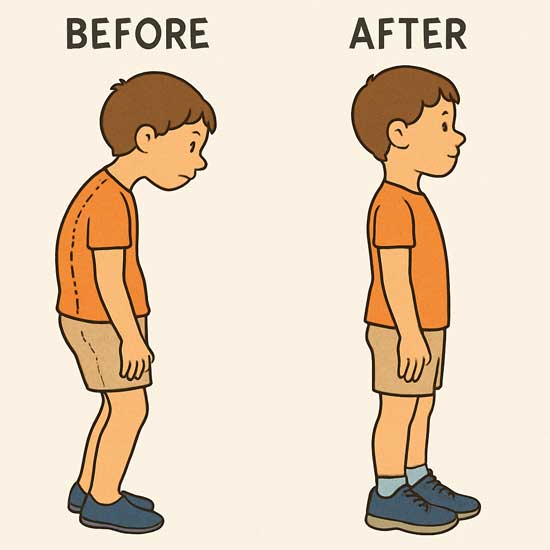Pronation Vs Supination Foot – The Most Effective Method to Improve the Way Your Child Walks!

Has your child been complaining about foot or leg pain, or are you noticing changes in how they walk or run? Many parents struggle to tell the difference between pronation and supination, but understanding the difference is key—each requires a different type of shoe support. The right balance between pronation and supination is essential for healthy foot mechanics, and imbalances can impact your child’s entire body—from the feet to the knees, hips, and back. Since children are still growing, addressing these issues early is crucial to preventing long-term posture and gait problems. Let me help you identify what’s going on and guide you toward the best footwear solution for your child.
Foot Pronation vs Supination – Do These Images Look Familiar?
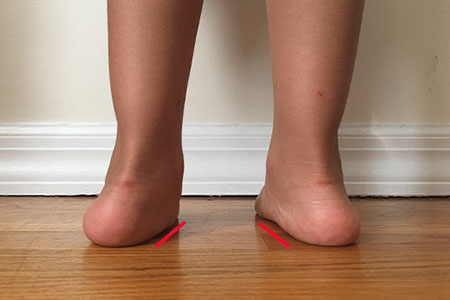
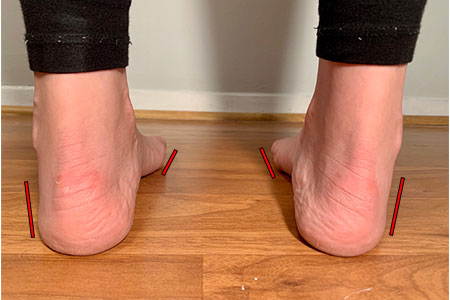
Can the Right Shoes Help Correct Your Child’s Pronation or Supination?
Absolutely. The right pair of supportive shoes can make a world of difference for children with pronation or supination issues. Proper footwear helps realign the feet, prevents them from rolling inward or outward, and encourages straighter walking and running—ultimately improving posture. While only a few children’s shoes offer the necessary support and structure, I’m here to help you find the best options.
What a Difference the Correct Types of Shoes Can Make!
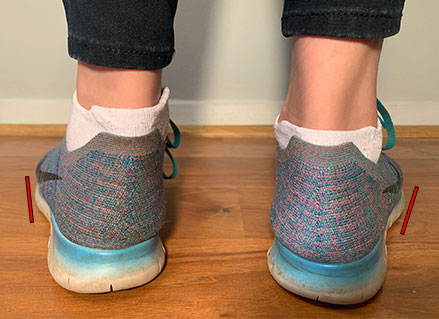
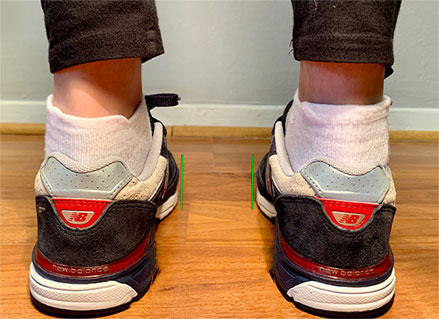

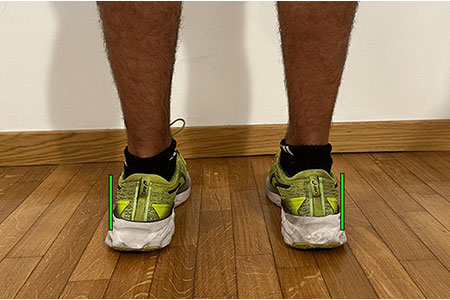
These aren’t orthopedic shoes — they’re everyday running shoes that just happen to offer superior support and structure compared to most others.
Pronation Vs Supination: Analyzing the Differences
Understanding the differences between pronation and supination is essential in selecting the right footwear for your child. These two foot movements, although natural, require specific shoe features to support and correct any imbalances.
Key Features of Shoes for Kids with Pronation
- Stable Base of Support A supportive outsole can help guide the foot into a more neutral position. This support reduces the strain on the inner foot, promoting better alignment throughout the leg.
- Stability: Look for shoes with a wide base to provide extra stability. A wider base offers a more stable platform for the foot, minimizing excessive inward rolling.
- Motion Control: Some shoes have built-in technology to limit excessive rolling inward. These features can help manage the foot’s movement, ensuring that it follows a more neutral path during activity.
Best Shoes for Kids with PRONATION – My Top Picks in 2025
In the quest for the perfect shoe, here are my top picks for 2025 that cater to children with pronation or supination issues. These recommendations are based on the latest advancements in footwear technology and design, ensuring that your child receives optimal support and comfort.
1. Shoe Style 990v6 by New Balance
These are the best shoes for pronation. The robust outsole helps distribute weight evenly across the foot and reduces strain on the muscles and joints. The downside that many parents complain about is the high price tag.
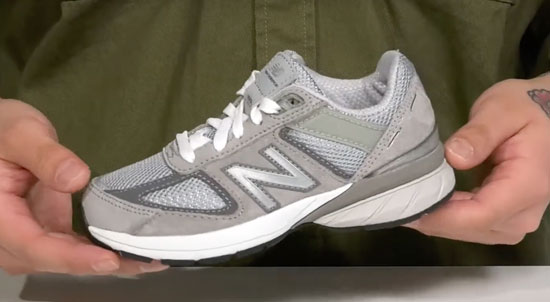
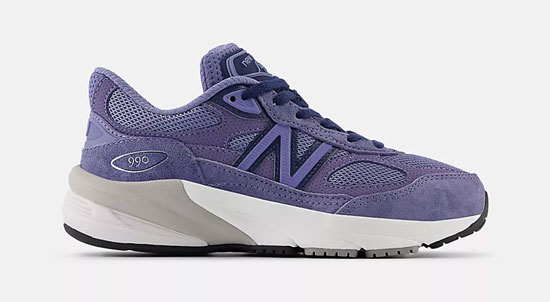
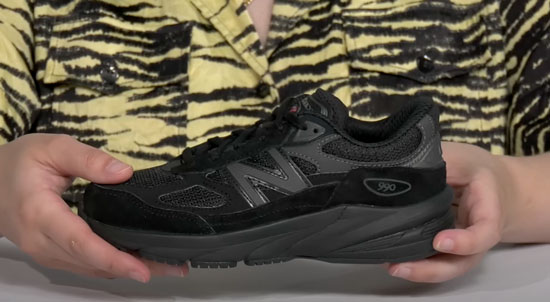
Key Features
- Available for toddlers, little, and big kids
- You can order the 990v6 with laces on the New Balance website, Amazon, or Zappos
- Available in medium, wide, and extra wide widths
- Also available in pink, black, and navy blue
- There is also a Velcro version of these shoes available in navy blue and pink
- I suggest that you get this shoe a half size larger than your child’s current foot size
2. Shoe Style Gabi by Memo (Orthopedic Shoe)
These orthopedic shoes for pronation are specifically designed to improve foot posture and comfort. The higher price point is a common complaint parents have but the investment in orthopedic shoes is often justified by their specialized design and effectiveness in addressing pronation.

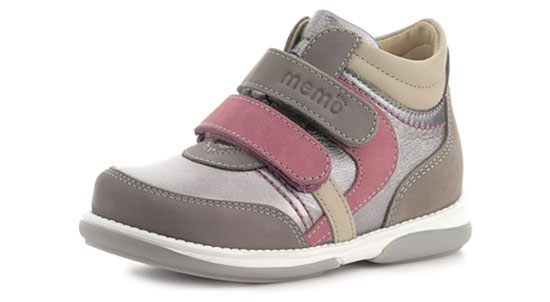
Key Features
- Available for toddlers and little kids
- You can order the shoe style Gabi by Memo on Amazon
- Fits medium and wide feet
- Also available in a Mary Jane style and a version for older kids called Memo Polo
- I suggest that you get this shoe a half size larger than your child’s current foot size
3. Shoe Style Elliott by Stride Rite
These high-top booties for pronation offer excellent support and a comfortable fit, making them a top choice for kids with flat feet.
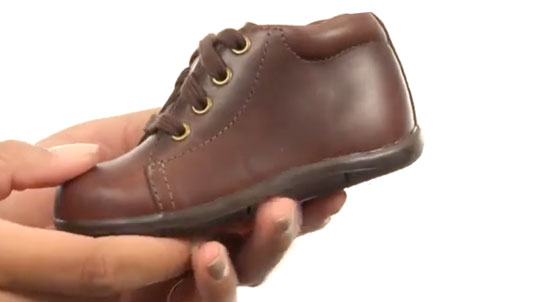
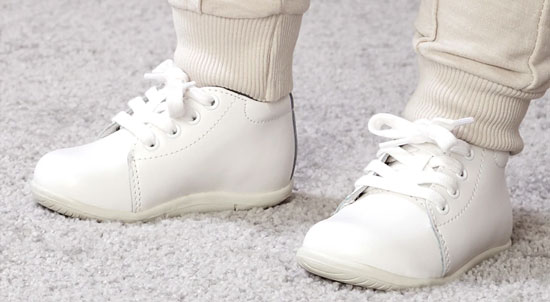
Key Features
- Available for toddlers
- You can order the shoe style SRT Elliot by Stride Rite on Amazon or Zappos
- Available in medium, wide, and extra wide widths
- I suggest that you get this shoe a whole size larger than your child’s current foot size
4. Shoe style 574 by New Balance
This New Balance shoe combines style with functionality. It offers solid support and cushioning, making it suitable for kids with flat feet and pronation. The shoe is offered at a lower price point.
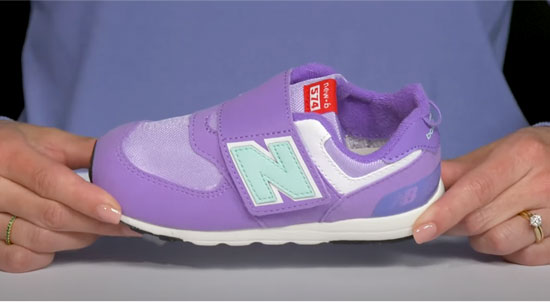
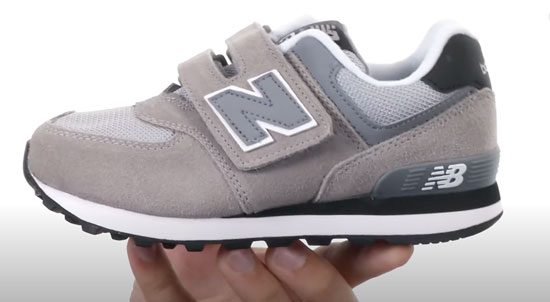
Key Features
- Available for toddlers, little, and big kids
- Order the shoe style 574 New-b V1 by New Balance on Amazon or the New Balance website
- Available in medium, wide, and extra wide widths
- Also available with laces on the New Balance website, Amazon, and Zappos
- I suggest that you get this shoe a half size larger than your toddler’s current foot size
5. Shoe Style Cohesion by Saucony
These shoes are ideal for kids with flat feet, as they offer excellent cushioning and stability. The affordable pricing also makes them accessible to a wide range of families.
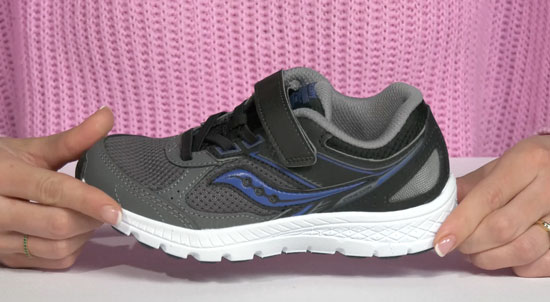
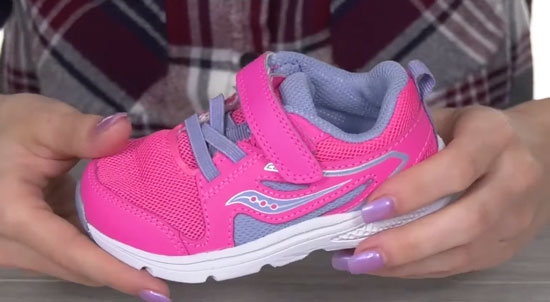
Key Features
- Available for little and big kids
- Order the shoe style Cohesion KDZ on Zappos or Amazon
- Available in medium and wide widths
- Also available with laces on Zappos and Amazon
- I suggest that you get this shoe a whole size larger than your child’s current foot size
6. Shoe Style Fresh Foam Arishi v4 by New Balance
This is a versatile shoe that provides a soft and comfortable fit while supporting your child’s flat feet. Families appreciate how this shoe is offered at a very reasonable price.

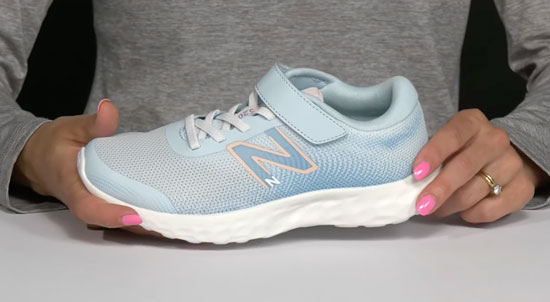
Key Features
- Available for toddlers, little, and big kids
- Order the shoe style Fresh Foam 650 by New Balance on the New Balance website or Amazon
- Available in medium, wide, and extra wide widths
- Also available with laces on Zappos and Amazon
- I suggest that you get this shoe a whole size larger than your child’s current foot size
7. Shoe Style 2002 by New Balance
These New Balance shoes for pronated feet are another great option for flat-footed children at a more affordable price point than the 990v6.

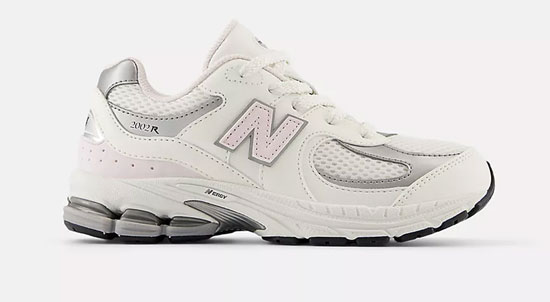
Key Features
- Available for toddlers, little, and big kids
- Order the shoe style 2002 by New Balance on the New Balance website
- Available in medium and wide widths
- I suggest that you get this shoe a whole size larger than your child’s current foot size
8. Shoe Style Cross Em Up by Adidas
These Adidas basketball shoes for pronation offer great support for flat-footed kids. The versatility of the shoe makes it suitable for both sports and everyday wear, adding value for parents looking for multi-functional footwear.
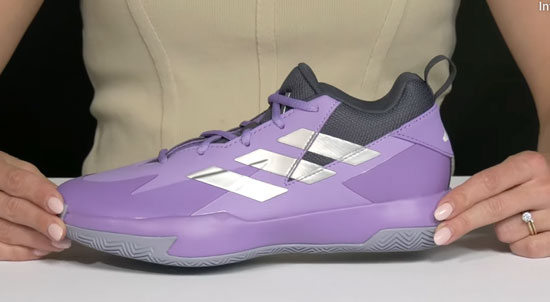
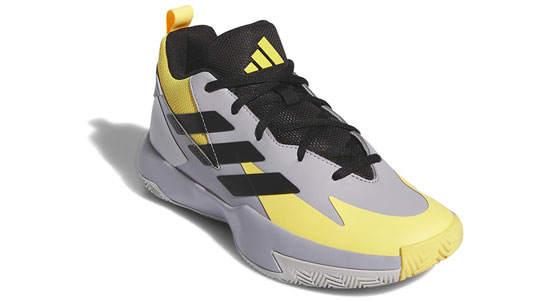
Key Features
- Available for little and big kids
- Order the shoe style Cross Em Up Select by Adidas on Zappos or Amazon
- Available in medium and wide widths
- I suggest that you get this shoe a whole size larger than your child’s current foot size
9. Shoe Style GT-1000 by Asics
These are the best running shoes for pronation, ideal for kids who require extra stability and support. This specific shoe is capable of fitting children with narrow feet.
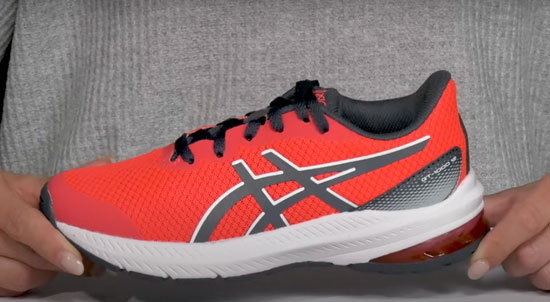
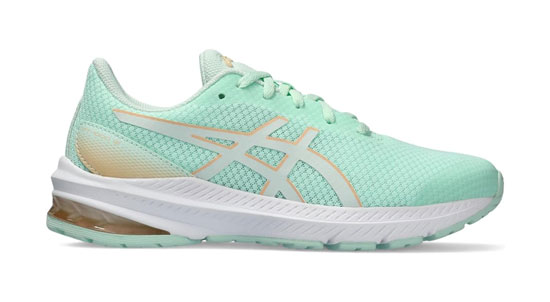
Key Features
- Order the shoe style GT-1000 by Asics on Zappos or Amazon
- Available for little and big kids
- Fits narrow or medium feet
- I suggest that you get this shoe a whole size larger than your child’s current foot size
Has Your Child Been Diagnosed with Supination?
Supination is the opposite of pronation—it’s when your child’s feet roll outward as they walk. Kids with high arches are especially prone to supination, which means they often walk on the outer edges of their feet.
High arches naturally encourage this outward roll, but supination can also stem from weak foot muscles. This weakness often develops when kids wear shoes that lack proper support or don’t fit well, making the problem worse over time.
Key Features of Shoes for Kids with Supination:
- Cushioning: Ample cushioning helps with shock absorption, reducing the impact on the foot. Proper cushioning can also alleviate pressure on the joints, making each step more comfortable.
- Flexibility: Flexible shoes allow natural foot motion and help prevent injury. This flexibility ensures that the foot can move without restriction, promoting a more natural gait.
- Neutral Heel: A neutral heel encourages even weight distribution. This feature helps in maintaining balance and reducing excessive strain on specific parts of the foot.
Best Shoes for Kids with SUPINATION – My Top Picks in 2025
With superior cushioning and flexibility, these runners are ideal for kids with high arches. They absorb impact effectively, reducing the stress on the outer foot and enhancing overall comfort.
1. Shoe Style 990v6 by New Balance
These are the best New Balance shoes for supination as the robust outsole helps distribute weight evenly across the foot and reduces strain on the muscles and joints.



Key Features
- Order the 990v6 with laces on the New Balance website, Amazon, or Zappos
- Available for toddlers, little, and big kids
- Available in medium, wide, and extra wide widths
- Also available in pink, black, and navy blue
- There is also a Velcro version of these shoes available in navy blue and pink
- I suggest that you get this shoe a half size larger than your child’s current foot size
2. Shoe Style Kinvara by Saucony
These Saucony shoes for supination are lightweight and offer excellent cushioning and flexibility. It’s perfect for kids who enjoy running and other high-impact activities.
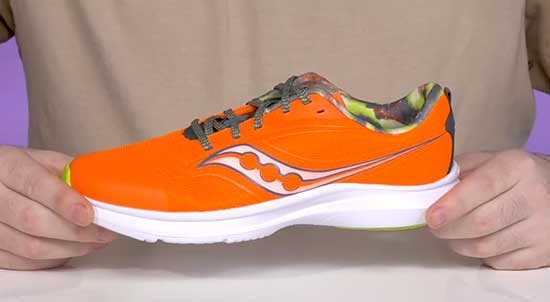
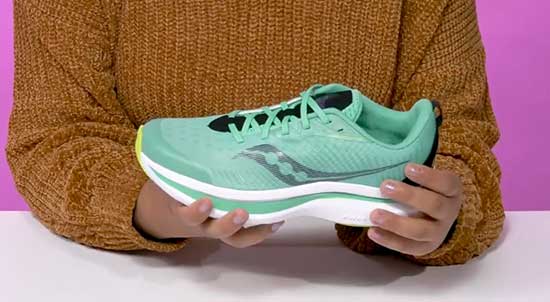
Key Features
- Order the shoe style Kinvara by Saucony on Amazon
- Available in medium and wide widths
- Foam padding placed around the ankle collar and under the tongue
- Comfort sockliner molds to your foot with padding in the heel for ultimate cushioning at heel-strike
- Engineered mesh for structure, stretch and enhanced breathability
- I suggest that you get this shoe a half size larger than your child’s current foot size
3. Shoe Style Cumulus by Asics
These narrow Asics shoes for supination offer a snug fit with a focus on cushioning, making them ideal for everyday wear.
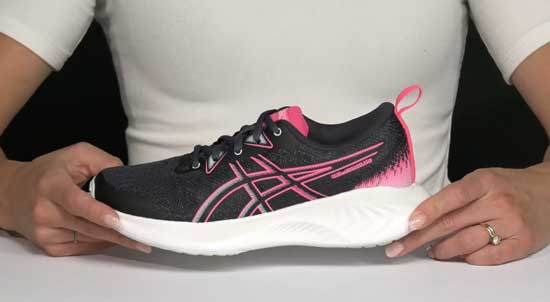
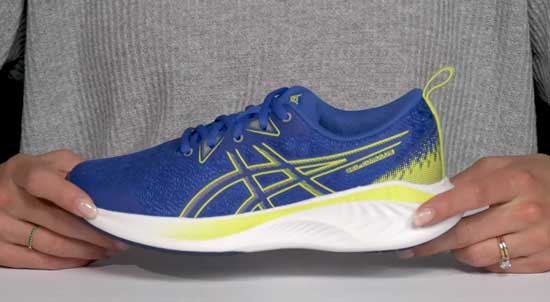
Key Features
- Order the shoe Gel-Noosa by Asics on Amazon or Zappos
- Available for little and big kids
- Engineered mesh upper: Improves breathability
- Fits narrow feet
- I suggest that you get this shoe a whole size larger than your child’s current foot size
4. Shoe Style Gel-Excite by Asics
These running shoes for supination offer excellent cushioning and support.
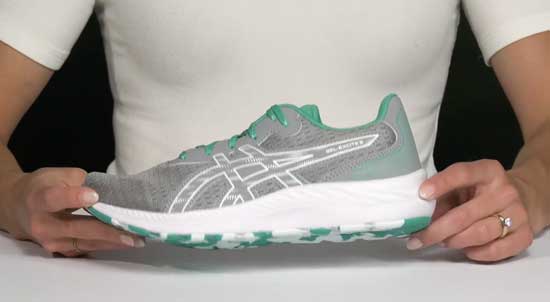
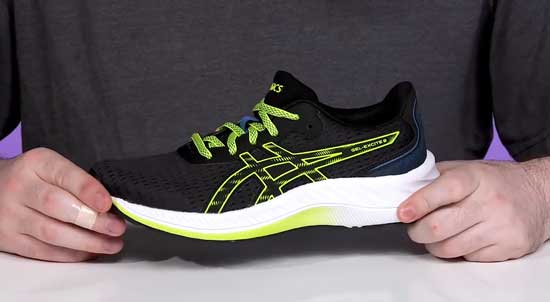
Key Features
- Order the shoe style Gel-Excite by Asics on Amazon
- Available for little and big kids
- Fits narrow feet
- GEL technology: Improves impact absorption and creates a softer feeling at footstrike
- I suggest that you get this shoe a whole size larger than your child’s current foot size
5. Shoe Style 2002 by New Balance
These New Balance shoes for supination are another great option for children with high arches at a more affordable price point than the 990v6.


Key Features
- Order the shoe 2002 by New Balance on the New Balance website
- Available for toddlers, little, and big kids
- Available in medium and wide widths
- I suggest that you get this shoe a whole size larger than your child’s current foot size
6. Shoe Style Cross Em Up by Adidas
These Adidas basketball shoes for supination offer great support for kids with high arches. The versatility of the shoe makes it suitable for both sports and everyday wear, adding value for parents looking for multi-functional footwear.


Key Features
- Order the shoe Cross Em Up Select by Adidas on Zappos or Amazon
- Available for little and big kids
- Available in medium and wide widths
- I suggest that you get this shoe a whole size larger than your child’s current foot size
7. Shoe Style GT-1000 by Asics
These Asics running shoes for supination are a popular choice for kids who require extra stability and support. This specific shoe is capable of fitting children with narrow feet.


Key Features
- Order the shoe GT-1000 by Asics on Zappos or Amazon
- Available for little and big kids
- Fits narrow or medium feet
- I suggest that you get this shoe a whole size larger than your child’s current foot size
How to Tell If Your Child Has Foot Problems
Wondering if your child might have underlying foot issues? Knowing what signs to watch for can help you catch problems early and take action. Here are some common red flags:
- Your child often complains of tired or achy feet and legs.
- They frequently ask to be carried or pushed in a stroller, even for short distances.
- They resist walking or seem reluctant to stay on their feet.
- They appear clumsy, trip often, or seem uncoordinated.
- They avoid sports or active play.
- You notice unusual wear on the soles of their shoes.
If any of these sound familiar, it could be time to take a closer look at your child’s foot health.
When Supportive Shoes Are Not Enough: Try Orthotics
Sometimes, supportive shoes alone may not be sufficient. In such cases, orthotics can offer additional support and alignment, providing targeted support that can correct alignment issues and enhance comfort.
Best Orthotics for Children with Pronation or Supination
The right orthotics can make a big difference in your child’s posture and help relieve—or even eliminate—the strain placed on their knees and hip joints. While I won’t dive into all the details here, I’ve written helpful guides that break down the best orthotics for children with pronation or supination. If your child is struggling with foot alignment, those articles are a great place to start.
Contact Me for Tailored Shoe Recommendations
If you’re unsure about the best shoes for your child, feel free to reach out for personalized recommendations. As an experienced shoe fitter, I’m here to help you find the perfect pair based on your child’s unique foot shape and condition.
Whether you contact me via email or through the comments section below, I’m committed to providing you with the resources and guidance you need to ensure your child’s feet are well-supported. Through personalized consultation, I can assess your child’s specific needs and recommend footwear options that best suit their requirements.

